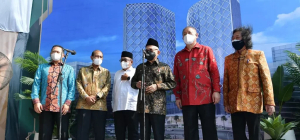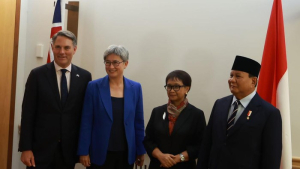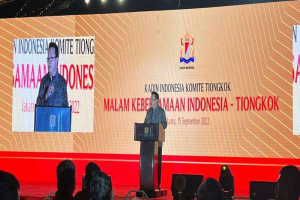Government provides support to automotive industry facilities, including EVs
ASEAN is the largest automotive market in the world where many brands trade their vehicle products from various parts of the world. The 10 Southeast Asian member states have a bright projection for the automotive market with the trend of increasing economic growth with high absorption capacity that can attract foreign investors and reduce dependence on automotive imports.
Prospective automotive market
According to worldometers, ASEAN has a population of 668,619,840 people with a population growth of 1%. Indonesia is one of the contributors to the ASEAN population of 273,523,615 people.
Population growth provides promising prospects for the automotive industry. According to the Coordinating Ministry for Economic Affairs, this prospect is strengthened by wholesale cars in June 2022 amounting to 79,100 units with growth reaching 8.9% (YoY), while the transportation equipment industry sector increased to 7.4% (YoY). This growth contributed to the National GDP with a percentage reaching 1.36%. This fact is a potential that Indonesia has. Meanwhile, the government has been making all efforts to strengthen the domestic automotive industry.
Indonesia supports the development of EVs
"The second quarter of [our] economic growth this year reached 5.44% with the contributing sector being automotive. The government has contributed to automotive sales through concrete support for luxury tax (PPnBM) in 2021 that reached IDR4.63 trillion," said Coordinating Minister for Economic Affairs Airlangga Hartarto during the opening ceremony of the GAIKINDO Indonesia International Auto Show (GIIAS) at the Indonesia Convention Exhibition on August 11, 2022.
In addition, there is a relaxation of taxation as a form of incentive to increase the utility of the automotive industry, especially motorcycles with a 100% reduction in luxury tax for vehicles with a selling price of less than IDR200 million and there will be a proportional reduction.
The government also issued a Presidential Regulation No. 55/2019 to accelerate battery-based vehicles (BEV/EV) on road transportation. Then, there is support for the construction of new renewable energy infrastructure and the electric vehicle industry.
Hartarto emphasized that the use of EVs is proof of the president's commitment to the development of EV vehicles in Indonesia and the energy transition to meet the demands of zero-emission by 2060. With government support, the government hopes that EVs can be sold domestically at competitive prices and encourage EV production at home.
The GIIAS 2022 event was attended by several important officials from within the country and abroad such as the House of Representatives (DPR) members, Minister of Industry Agus Gumiwang Kartasasmita and envoys from several countries.
Challenges to EVs in Indonesia
Despite the optimism of the government, the lack of EV battery charging stations in Indonesia prompt that electric cars can only be used in Jakarta. Meanwhile, outside of the concentrated zones in Jakarta, charging stations are still not available widely. This prevents users of EVs could not go too far from the charging stations.
On the other hand, electric car owners might lack the necessary facilities for electricity to charge their vehicles at their houses. Not to mention, the lack of electricity output that causes a long charging time for their cars and furthermore the lack of charging stations nearby.
Several car brands now provide their own charging stations at public places. However, there are certain exclusivity and privilege for those who only own the brands of the charging stations, while the ones who own different brands should queue or wait for the latter brands to finish charging their cars.
Already have an account? Sign In
-
Start reading
Freemium
-
Monthly Subscription
20% OFF$29.75
$37.19/MonthCancel anytime
This offer is open to all new subscribers!
Subscribe now -
Yearly Subscription
33% OFF$228.13
$340.5/YearCancel anytime
This offer is open to all new subscribers!
Subscribe now







